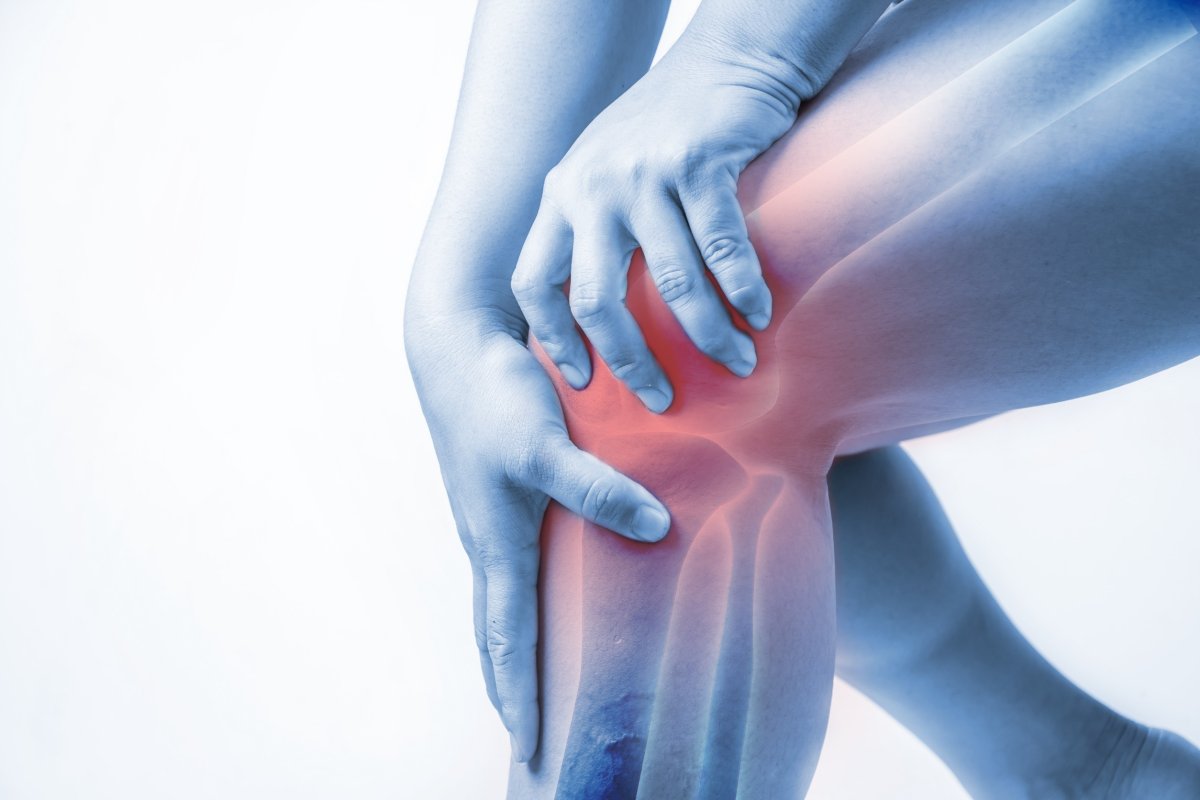
By: Matt Weik, BS, CSCS, CPT, CSN
Your knees play a crucial role in supporting your body weight as you move. Due to their continuous use, they are susceptible to injury and gradual wear and tear. Knee-popping noises are usually harmless. However, if you experience pain along with the crackling, it might suggest osteoarthritis or another type of arthritis.
Some occasional pops, snaps, and crackles when you move your knees are common. In medical terms, this term is known as crepitus. While osteoarthritis could be a cause, there are various other reasons.
These noises may sometimes indicate that your knees are not in the best condition. But what exactly do these sounds signify, and why do they occur?
In this article, we will dive deeper and talk about the causes of popping and cracking knees and explore potential solutions.
Disclaimer: This article is for informational purposes only and is not meant to treat or diagnose any condition. If you have knee pain or issues, it is recommended that you speak with your doctor.
The Main Causes of Crepitus
Knee pain often results from sudden injuries, aging-related wear and tear, or joint damage. It can feel dull, achy, or like a burning sensation. It may even cause shooting pains or make your knee unstable when walking or bending.
Here are some common reasons for knee pain when bending:
1. Meniscus Injury
The meniscus, a fibrocartilage piece beside the knee joint, cushions the knee bones. A torn meniscus affects regular knee bending, causing a popping or clicking sound as it catches in the joint.
Tears can occur suddenly or gradually during physical activity, leading to varying levels of pain and clicking based on severity and location.
2. Gas Bubble
Changes in joint pressure can lead to the gradual formation of tiny gas bubbles within the joints. When these bubbles burst rapidly, they produce a popping sound similar to popping a bubble wrap.
You may also notice this with the knuckles of your hand cracking (hence, “cracking your knuckles”) as it’s the gas bubbles that are bursting.
This condition, termed cavitation, is harmless. Contrary to popular belief, knee popping without pain doesn’t increase the risk of arthritis.
3. Cartilage Injury
Cartilage is a protective layer on the surfaces of knee bones, which enables smooth joint movement. Injuries to this tissue are frequent, ranging from minor to severe.
While a small cartilage injury may present with no noticeable symptoms, larger injuries can result in loud popping sounds and significant pain, potentially causing disability.
There are some additional symptoms, such as swelling, limping, knee locking, or instability may also occur, indicating a cartilage injury. These injuries are more common among younger, physically active individuals.
4. Tendonitis
Tendonitis, or inflammation of the tendons, can lead to swelling and discomfort in the knee upon bending. Tendons play a crucial role in helping movement by connecting muscles to bones.
Tendonitis typically arises from overuse, and it is commonly observed in runners due to the repetitive knee motion involved in running.
This condition can weaken the tendons, increasing the susceptibility of the knees to injury. Mild cases of tendonitis can often be cured with rest and temporary discontinuation of the activity that triggered it.
5. Osteoarthritis
As individuals age, the cartilage around the bones may deteriorate, leading to pain, stiffness, and discomfort during daily activities such as walking or climbing stairs.
Research suggests that approximately 14 million adults in the United States suffer from painful knee osteoarthritis, with the risk increasing with age. Surprisingly, nearly 2 million adults under 45 years old experience symptoms of this condition.
Factors such as being overweight, sustaining a previous knee injury, or having a family history of osteoarthritis can increase the risk of developing knee osteoarthritis.
Additionally, other forms of arthritis, like rheumatoid arthritis and posttraumatic arthritis, can contribute to cartilage loss through various mechanisms, further worsening knee pain and discomfort.
6. Runner’s Knee
Runner’s Knee, also known as patellofemoral pain syndrome, is known by an ill-defined ache around the knee, mostly felt at the front.
Contrary to its name, this condition isn’t exclusive to runners but can affect individuals engaged in various activities. It occurs when the kneecap rubs against the femur, often accompanied by a grinding sensation or popping noise during knee movement.
Symptoms typically aggravate with prolonged activities, such as running or descending stairs, and after extended periods of inactivity, like sitting for long hours at work.
Can You Fix Knee Cracking?
Treatment for cracking knee joints varies depending on the underlying cause. If the cracking isn’t accompanied by pain or discomfort, often no intervention is needed.
Rest, icing the affected area, and over-the-counter pain relievers can cure minor inflammation or pain. Your healthcare provider may also recommend some strength exercises.
However, medical intervention may be necessary for more severe injuries or conditions that don’t improve with conservative measures.
In cases requiring intervention, your healthcare provider might suggest arthroscopic surgery, a minimally invasive procedure in which small instruments and a camera are inserted through tiny incisions in the knee to repair joint issues.
If arthroscopy isn’t sufficient, more extensive surgery may be needed. Total knee replacement surgery might be considered for severe conditions like osteoarthritis or significant trauma.